Page last updated: May 2, 2021

Choosing Your Invisalign® Provider
Whether you’re considering Invisalign® in Vancouver, WA or another part of the world, choosing your Provider is a big decision. Your doctor should have the expertise to create a treatment plan that will yield the best result in the shortest amount of time, the experience to identify and resolve issues as they arise, and the caring to make sure your orthodontic journey is as pleasant as possible and that you are happy with the results.
It is important to note that while many dentists have taken brief training courses in order to offer Invisalign® products to their patients, they lack the years of specialized education and training that orthodontists receive, not to mention the experience that comes with treating orthodontic cases day in and day out.
Watch the video to learn more about Invisalign® in our Vancouver WA office, or skip down to continue reading:
Dr. Durk Irwin, Your Certified Provider for Invisalign® Vancouver, WA
Dr. Irwin is not only a Certified Invisalign® Provider, but an orthodontist with over 20 years of experience in private practice as well. This means you can trust him to make the correct diagnosis and prescribe the best treatment plan for your particular needs. You can also rest assured that if any issues arise during your Invisalign® treatment in Vancouver, WA, Dr. Irwin has the expertise to resolve them and get you back on track in no time.
Dr. Irwin has successfully treated many of his patients in Vancouver, WA with Invisalign® over the years. Not only that, he and his team genuinely care about their patients. You can expect that they will go out of their way to make sure that you are happy with the results of your Invisalign® treatment and that the journey along the way is a positive one.
If you’re ready to take the next step on your journey with Invisalign® in Vancouver, WA, then email us to set up your free consultation and exam. You can also call (360) 883-6713, Monday-Thursday 8am-5pm and Friday 8am-4pm.
If you want to learn more before scheduling your free consultation, read on for our Ultimate Invisalign® Guide.
The Ultimate Invisalign® Guide
Contents
- Background
- How Invisalign® Works
- Conditions Treated
- Treatment Time
- Treatment Process
- Care and Cleaning
- Tips
- Invisalign® vs. Braces — Pros and Cons
- Results—Before and After Photos
- Cost
- Ratings and Reviews
- Other FAQ
- Invisalign® Teen
Background
Company and History
Align Technology revolutionized the way orthodontists straighten teeth when they brought Invisalign® to the market back in 1999. Since then, they have introduced new versions of their product such as Invisalign® Teen to cater to specific patients’ needs.
Align has also continued to improve on the original aligner system. With the addition of SmartForce® Attachments and the use of Smart®Track material, Invisalign® is now able to treat more complex cases and in much less time than the original version
Technology, innovation and a commitment to providing orthodontic patients with the best alternative to fixed braces keeps Align Technology at the top of the aligner therapy market and light years ahead of the competition. To date, Invisalign® has transformed over 5 million smiles and counting, which includes over 1 million teens.
Invisalign®—What it is and What it’s Made of

Invisalign® aligners are orthodontic devices that look much like tooth-whitening trays. The removable aligners are made of a clear, BPA-free plastic and are worn over the teeth to correct a variety of orthodontic issues from simple to complex.
How Invisalign® Works
Invisalign® works by using a series of custom-designed aligners that gradually and gently move the teeth into place. Typically, you will advance to a new aligner in the series every one-to-two weeks until treatment is complete.
Attachments, Buttons, and Elastics

Image Source: nobraces.blogspot.com
It is possible that you will need attachments and/or buttons and elastics with the aligners during your Invisalign® treatment.
Attachments (sometimes referred to as buttons or tabs by patients) are made of a tooth-colored dental bonding material. They are tiny and will vary in shape, depending on the type of movement required. When treatment is complete, your doctor will gently buff off the attachments, a quick and painless procedure.
Buttons are tiny anchors made of metal or plastic that are used in conjunction with elastics. Like attachments, the tabs are bonded to the tooth, usually close to the gum line, and are removed when treatment has been completed.
While these added features are more obvious than aligners alone, they enable more complex cases to be treated with Invisalign®; without them, many patients would be limited to traditional braces.
TopConditions Treated
Below are some of the more common orthodontic issues that can be treated with Invisalign®:
Crowded Teeth
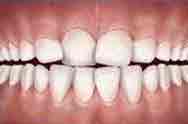
Crowding is one of the most common orthodontic problems, especially in adults. Lack of space causes teeth to become crooked and overlap.
Extra Spacing or Gaps
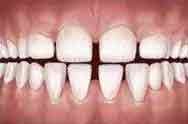
Extra spacing between teeth can be caused by tongue thrusting, missing teeth, or small teeth.
Overbite
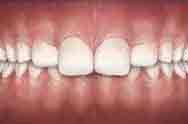
Overbite—While some degree of overlap is normal, too much can cause pain and excessive tooth wear.
Underbite

Underbite refers to when the lower teeth overlap the upper teeth when mouth is closed.
Crossbite
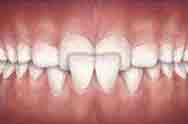
Crossbite is a condition in which the upper teeth bite inside the lower teeth. It can affect the front or back teeth and occur on one or both sides.
Open Bite
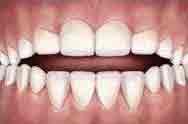
When the upper teeth don’t overlap the lower teeth when the mouth is closed, this is known as an open bite.
TopTreatment Time
One of the most common questions asked is how long treatment takes. Treatment time varies greatly, from 6 to 18 months or longer, depending on the complexity of the case. AcceleDent® Aura and weekly aligner changes are two options that can speed up the process:
AcceleDent® Aura
Patients utilizing AcceleDent® can experience less orthodontic discomfort and up to 50% faster treatment times. AcceleDent® Aura is typically worn for 20 minutes per day. It uses gentle vibration to stimulate cellular activity, which allows for faster tooth movement.
Weekly Aligner Changes
In 2016, Align Technology announced that weekly aligner changes were possible, allowing patients to complete treatment up to 50% faster. The company attributes this change to features exclusive to Invisalign® aligners, such as SmartTrack, SmartForce, and SmartStage technology.
The weekly aligner change recommendation is endorsed by Align’s North American Clinical Advisory Board, and based on the clinical analysis of more than 200 cases.
Weekly aligner change may not be appropriate for all patients and is left to the discretion of the Invisalign® Provider. Be sure to ask if weekly aligner changes are possible for your case during your initial consultation.
TopTreatment Process
The treatment process is straightforward and easy, and it all starts with your initial consultation and exam. During this appointment, you and your doctor will discuss your case and determine if Invisalign® is right for you. You will also go over the cost of treatment and the payment options available to you.
The next step involves taking digital scans. These images will be used to create a digital model of your teeth and set forth a treatment plan based on your doctor’s recommendations.
Once the treatment plan is approved, your custom aligners will be made. For best results, you should wear your aligners for 20-22 hours per day. They can be removed for eating, drinking anything other than water, and for oral hygiene. You will change trays every 1-2 weeks, according to your doctor’s instructions.
Typically, you will only need to stop by for a quick visit every 6-8 weeks; however, you may need to come in more frequently or for a longer visit depending on your progress and if any issues should arise during treatment.
Once you have finished wearing all of the aligners in the series, you will move to the retention phase to keep your new smile in place. For the first six months after treatment, you can expect to wear your retainer for about the same amount of time each day as you did the trays. After that you will only need to wear them at night.
Aside from the occasional follow-up visit, the only thing left to do is enjoy your beautiful new smile!
TopCare and Cleaning

Cleaning your aligners is quick, easy, and very necessary to prevent bacteria build-up, discoloration, and odor. Soak your trays every day using the Invisalign® cleaning system, denture cleaner, or a retainer cleaner such as Retainer Brite. Use warm, never hot water when cleaning your trays to prevent damage. You can also clean your aligners with a soft toothbrush and clear, soft anti-bacterial soap.
Avoid colored soaps and mouthwashes, as they may discolor the plastic. Toothpaste isn’t recommended either, as many of them contain abrasives that could scratch your aligners and make them more noticeable.
TopTips
Here are 7 tips to help you get the most out of your Invisalign® treatment:
1. Avoid placing your aligners in hot water to prevent them from becoming warped and unusable.
2. Hold on to your old aligners; you may need to use them temporarily if your current trays become lost or damaged.
3. Use a tool like OrthoKey to help you remove your aligners if you’re having trouble. You could also try rinsing with warm water before removing them.
4. Avoid drinking colored beverages while you’re wearing your aligners to prevent staining.
5. Follow your doctor’s instructions for wear time. If you wear your trays for less than the prescribed time (usually 20-22 hrs per day), your teeth will not be ready to move to the next set on schedule and will increase your overall treatment time.
6. Take a travel toothbrush, floss, and mouthwash with you wherever you go and use them before replacing your aligners every time you eat. If you do forget, rinse thoroughly with water before replacing the aligners, and clean them and your mouth as soon as possible.
7. Wear your retainer! If you want to protect your investment and keep your Invisalign® smile for life, you’ll need to wear your retainer as instructed by your doctor (usually as often as you wore your trays for the first 6 months, then nightly for the rest of your life).
TopInvisalign® vs. Braces — Pros and Cons

As popular and effective as Invisalign® is, there may be reasons you would want to opt for traditional braces instead. Below are some pros and cons of each treatment method to help you determine which is best for you.
Invisalign® Pros
+ Invisible—The fact that the aligners are virtually invisible is one of their biggest selling points. While braces with clear or tooth-colored brackets are less noticeable than their metal counterparts, Invisalign® still has the edge in this department.
+ Comfortable—Patients that previously had traditional braces report that Invisalign® is much more comfortable.
+ Removable—The convenience and flexibility of being able to remove your trays when needed is an attractive feature of Invisalign®.
+ No Eating Restrictions—Because the aligners are removable, you will be able to eat whatever you please during treatment.
Invisalign® Cons
– May Get Lost—The blessing of using a removable appliance could also be a curse if you leave them behind or accidentally throw them away.
– Compliance—You must be disciplined enough to wear the aligners for the full 20-22 hours per day to avoid delays in your treatment.
– Price—If you have extensive alignment needs, the cost of Invsalign® could be higher compared to traditional braces.
– Staining—The aligners are prone to staining, which means you shouldn’t smoke or drink anything other than plain water while you’re wearing them.
Braces Pros
+ Compliance—Because the braces stay in place 24/7, compliance won’t be an issue.
+ History—Because traditional braces have been around so much longer than Invisalign®, the results with them are more predictable, especially when it comes to more complex cases.
+ Treating Complex Cases—While Invisalign® has come a long way in this department and can now treat many more types of issues than when they first came to market, there are still some cases that will achieve a better result when treated with braces instead of aligner therapy.
+ Cost—In some cases traditional braces may be less expensive than aligner therapy.
Braces Cons
– Oral Hygiene—Cleaning your teeth with fixed braces will be a bit more challenging and take longer than with removable aligners.
– Eating Restrictions—Certain foods will be off limits when you have traditional braces. You may also find it difficult to eat anything other than soft foods when you first get them on or have an adjustment.
– Orthodontic Emergencies—Poking wires or damaged brackets may have you visiting your orthodontist unexpectedly.
– Comfort—As previously mentioned, most patients who have experienced both will say that aligners are more comfortable than fixed braces.
TopThe Results — Before and After Photos
Below are real results achieved by Invisalign® patients that were treated for a variety of conditions.

For even more results and before and after photos, check out Invisalign® on Facebook, Instagram, and Twitter.
TopCost
It’s understandable that you’d want to know how much treatment will cost before even stepping foot in the orthodontist’s office. However, there is not one set price for Invisalign® treatment. According to their website, the average cost of treatment varies greatly, from $3,000 to $8,000. What you actually pay will depend on your location and what the individual doctor charges, the complexity of your case/how many aligners you’ll need, and what percentage of that cost will be covered by your insurance.
If you don’t have insurance or your provider doesn’t cover the full price of treatment, there are other ways to minimize your out-of-pocket costs or make them more manageable, such as using tax free dollars from a health savings account, choosing a doctor that offers payment plans and other discounts (like us! 🙂 ), or utilizing healthcare financing options such as Care Credit®.
Ratings and Reviews
Better Business Bureau
Align Technology, Inc. has an A+ rating with the BBB.
Invisalign® has a 4.4 star rating (85% positive) on Google, with 225 reviews.
Real Self
Invisalign® has 224 ratings on Real Self. 88% of those users say Invisalign® is “worth it.” You can check out those reviews here.
TopOther FAQ
Tap a question to see the answer. Tap again to close.
+ Is Invisalign® treatment painful?
You may feel some slight pressure and discomfort for a day or two after starting a new aligner. Starting a new aligner before bed allows your teeth to adjust while you’re sleeping, which will minimize the discomfort you feel the next day.
+ Will wearing Invisalign® affect my speech?
Speech impediments caused by wearing the aligners are typically minor and short-lived. You may have a lisp while your tongue is adjusting to your new aligners, but this should clear up fairly quickly.
+ Are there any eating restrictions?
No! Because the aligners are removable, you do not have the eating restrictions associated with traditional braces.
+ Does Invisalign® Make Your Mouth Dry?
You may experience dry mouth with Invisalign® until your mouth adjusts to the appliance. If you are already having this issue or want to prepare for when you start your Invisalign® treatment, check out our 10 Simple Solutions for dry mouth from Invisalign® (or braces or retainers for that matter).
+ What is the Invisalign® diet?
Truth be told, there really is no “Invisalign® diet.” However, some users do report losing a little weight during treatment. This is because the extra steps of removing the aligners before eating and having to brush before putting them back in result in less snacking between meals. Because colored liquids can stain the plastic, many patients end up drinking more water during treatment as well—yet another benefit of Invisalign®!
+ Can I smoke while wearing Invisalign®?
The aligners will stain if you smoke while wearing them, so it is not recommended.
+ Can I chew gum while wearing Invisalign®?
Gum will stick to the aligners so you should remove them prior to gum chewing.
+ What are Chewies and do I need them?
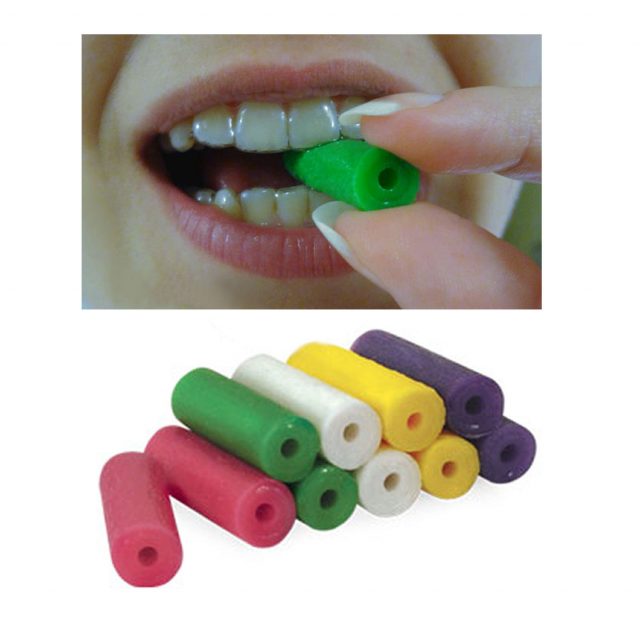
Image Source: dentakit.com
Chewies are small, cylindrical foam devices that you bite down on to ensure your aligners are properly seated against your teeth. Your doctor may provide you with aligner chewies, or you can order them online at sites like dentakit.com.
Chewies are reusable and disposable. Two should last through one aligner tray; you can clean them with mild soap and water or diluted mouthwash in between uses.
Chewies should be used when you replace your aligners after eating or brushing your teeth. You simply bite down on the chewie, moving it throughout your mouth until you have bitten down with all of your teeth, then repeat.
Chewies are small enough to fit in your aligner case, so you can bring them with you to use as needed.
+ Can I wear Invisalign® while pregnant?
Invisalign® treatment is generally recognized as safe for pregnant women. However, there are a few things that you will want to consider before making that decision:
X-rays
Before beginning any type of orthodontic treatment, you will need to have x-rays done. X-rays provide a complete picture of what’s going on with the jaw bone and joint, teeth, and roots. They will reveal abnormalities that may be present, as well as any impacted, missing, or extra teeth. This information is necessary for your orthodontist to make an accurate diagnosis and create the most appropriate treatment plan for you.
The risk of the radiation from a single x-ray harming your unborn child is incredibly small. Digital x-rays reduce radiation exposure by close to 90%, so if your orthodontist utilizes this technology the risk become that much lower. Still, if this is a concern for you or your doctor, then it is best to either have your x-rays done before you become pregnant, or wait until after the baby is born to begin treatment.
Morning Sickness, Increased Appetite
Other factors to consider in your decision to use Invsalign® during pregnancy include morning sickness and increased appetite. If you vomit frequently while wearing the aligners, the stomach acids could damage the plastic. For this reason, you may want to wait until after the first few months of pregnancy to start treatment. As an alternative, you could wait until later in the day to start wearing your aligners, but keep in mind that wearing them less than the recommended 20-22 hrs per day will extend your overall treatment time. Eating more frequently throughout the day (and therefore, removing your trays more frequently) due to increased appetite may also increase treatment time.
+ Does Invisalign® work for children?
Children can start Invisalign® Teen as soon as they have lost all baby teeth and their second molars have started to erupt, which usually occurs by age 13. Although there are cases where the teeth are ready at a younger age, maturity and responsibility are equally important factors to consider when pursuing Invisalign® treatment for your child or teen.
+ What is Invisalign® Express?
Invisalign® Express and traditional Invisalign® use the same aligners to straighten teeth. The only difference with the Express designation is that 10 or fewer trays are used vs. the 20-30 needed to complete a normal course of treatment.
As such, Invisalign® Express isn’t a faster version of treatment available to everyone; rather, it is the version used in mild cases that can be corrected with 10 trays or less, which translates to about six months of treatment time. Those with mild crowding or spacing issues and minimal front tooth rotation are ideal candidates for Express treatment. Those with more severe issues can still be treated with Invisalign®, they will just have to go the traditional route with more trays and a longer overall treatment time.
+ What is the difference between the Invisalign® provider tiers?
If you’ve been researching Invisalign® providers, you may have seen some of them promoting themselves as Preferred, Premier, Elite, or Top 1%. While these designations may give the impression that one level is better than the other, the truth is they are solely based on the amount of patients the provider has treated with Invisalign®; as such, these tiers don’t directly reflect the quality of care or final results one can expect from the provider.
Every provider must undergo training and become certified before they can offer Invisalign® treatment. Beyond that, the tiers or designations are as follows:
A Premier Provider has completed a minimum of 50 Invisalign® cases total and treats at least 25 cases every 6 months.
A Preferred Provider has completed a minimum of 100 cases total and treats at least 50 cases per year.
An Elite Provider has completed at least 300 cases total and treats at least 50 cases every 6 months.
A Top 1% Provider has completed at least 800 cases total and treats at least 200 cases per year.
Invisalign® recently changed the tiers to Bronze, Silver, Gold, Platinum, Diamond, and VIP. Even though the names have changed, the criteria for these designations remains the same, which is strictly the number of cases treated with Invisalign®.
Although experience should be considered when selecting your provider, it is only one of many factors that will determine your treatment experience and final result. Cost and payment options, how successfully the provider has treated your type of case in the past, and rapport are other criteria that should be weighed before making a final selection.
Invisalign® Teen

In 2008, Align Technology brought Invisalign® to the teen market and has since made more than a million young people a whole lot happier about receiving orthodontic treatment.
The teen version has the same benefits of the traditional product, with a few additional features that are geared toward younger patients:
Compliance Indicator
The teen version of the trays have a blue dot that fades to clear after repeated use, so your child’s doctor will know if the trays have been worn faithfully (or not).
Guides New Molars Into Place
Younger patients no longer have to wait for all of their teeth to come in before starting treatment, as Invisalign® Teen has been designed with features such as “eruption tabs” which allow room for new teeth to erupt and help to guide them into place.
Additional Replacement Aligners
The fact that you can remove the aligners can be somewhat of a catch 22—the convenience is a huge plus, but the potential to lose or throw the trays away can be a disadvantage. Thankfully, Invisalign Teen® comes with several free replacements, so what once was a potential drawback is now much less of an issue.
Candidates for Invisalign® Teen
There is no set lower age limit for Invisalign® Teen. However, your child will need to be mature enough to comply with wear time and oral hygiene requirements, as well as cleaning and keeping track of the trays. Additionally, all of the baby teeth will have had to come out, and permanent incisors and first molars must have come in before your child is eligible for this treatment option.
TopWe hope we’ve answered all of your questions about Invisalign® treatment. If you are ready to take the next step toward your own Invisalign® smile, contact us to set up your FREE consultation.

